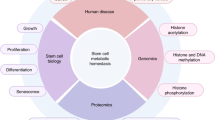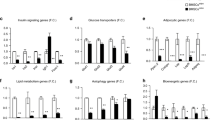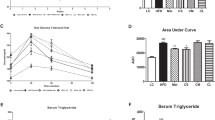Abstract
Metabolic disease is a well established major public health problem in the adult population. However, the origins of metabolic disease of adults can begin early in life. In addition, in recent years, there has been a disturbing increase in the number of children developing the full presentation of metabolic disease as a result of the increase in obesity in this population. Therefore, pediatricians and pediatric physician-scientists are essential both for instituting preventive measures and developing new therapies. This challenge has been met with a substantial increase in research into both the clinical and basic science of metabolism. A connection between glucocorticoids and the origins of metabolic disease is one enticing clue because of the clinical similarity between patients with glucocorticoid excess and those with metabolic disease. This perspective highlights one series of investigations that has advanced our understanding of the development of metabolic disease. In this work, a unifying link was found by investigating the role of glucocorticoids on cell fate and differentiation of mesenchymal stem cells. We conclude that elucidating the mechanisms by which glucocorticoids modulate cell fate decisions holds promise for developing new therapies and preventative measures.
Similar content being viewed by others
Main
Glucocorticoids are steroid hormones that seem to affect almost every tissue and organ system in the human body. It has become clear that these effects extend far beyond the simple regulation of carbohydrate metabolism for which they received their name. Most remarkable is the finding that these effects are tissue specific; the functional activities of glucocorticoids are dictated by the cellular and tissue environment (1). For example, in the immune system glucocorticoids act as potent anti-inflammatory agents, whereas in the developing lung they are essential for normal maturation (2–4). Understanding the mechanisms of how a single class of molecules can exert such disparate activities depending on the environment has challenged the basic science community for decades, and yet understanding this process holds incredible opportunity for therapeutic intervention. If we understand the details of how this tissue specific activity is achieved, we should be able to develop more specific therapeutic interventions with fewer side effects for a wide variety of diseases that are either refractory to current therapy or for which glucocorticoid therapy result's in unacceptable side effects and morbidity.
Although it is always desirable to limit the side effects of any therapy, glucocorticoids occupy an exclusive position with their incredibly broad range of indications (sometimes representing the only efficacious intervention for a disorder) that make them some of the most prescribed medications in spite of the sometimes devastating side effect profile (5). For this broad range of indications, a variety of forms of synthetic glucocorticoids with varying half-lives, potentencies and receptor affinities have been synthesized and developed into drugs. These drugs including dexamethasone, betamethasone, and prednisone that compliment the use of hydrocortisone that is converted to the natural and most abundant endogenous glucocorticoid, cortisol, which is synthesized in the adrenal gland.
Intriguingly, the constellation of signs and symptoms that develop in patients either being treated with super-physiologic levels of glucocorticoids or in patients whose bodies are generating excess glucocorticoids (i.e., in Cushing's disease) are remarkably similar. Therefore, they have been appropriately grouped together as a syndrome, termed Cushing's syndrome in honor of Dr. Harvey Cushing, one of the first physicians to recognize the clinical findings (6). Some of the most salient features in the original patients described by Cushing and in the countless patients to follow who suffer from Cushing's syndrome are the alteration in body composition and the (likely related) metabolic derangements. These patients have a dramatic increase in adipose tissue; specifically the visceral fat depot is most affected. Cushing's patients also have a significant decrease in muscle and bone mass.
It is worth noting that pediatric patients rarely progress to the externally dramatic presentations documented in the photographs of adult patients with Cushing's syndrome found in many prominent Internal Medicine textbooks. However, this has more to do with the ability of astute pediatricians who are specifically trained and adept at identifying early signs of Cushing's syndrome rather than there being a unique mechanism in children. For example, in the pediatric population, the effect of glucocorticoids on bone results in a decrease or complete halting of linear growth that the physician recognizes as requiring immediate further evaluation (7). This evaluation often identifies the underlying pathology at an early stage. However, if the early presentation either is missed or is especially aggressive (e.g., in patients with an adrenal carcinoma) or is unavoidable as when the underlying disorder is too severe to allow a tapering the dose of steroids, the effects in children are remarkably similar to those seen in the adult population. We can conclude from this that these three tissues—bone, fat, and muscle—are particularly sensitive to glucocorticoid levels in both pediatric and adult patients. These three tissues may also hold the key for understanding the connection of glucocorticoids with metabolic disease.
The connection between excess glucocorticoids and the development of metabolic disease such as metabolic syndrome (“Syndrome X”) frustrates clinicians, as this morbidity severely inhibits the use of otherwise highly efficacious therapy (5). However, this apparent intimate connection opens a potential window of opportunity into understanding the pathogenesis of metabolic syndrome. The clinical overlap in the findings seen in patients with Cushing's syndrome and metabolic syndrome raises the possibility that the development of metabolic syndrome results in a perturbation of some of the same pathways that are altered in Cushing's (8). This hypothesis is sometimes referred to as the ‘Flier hypothesis', after Dr. Jeffery Flier a physician-scientist who has identified some of the important molecular overlaps between these two disorders (9). Further studies investigating this hypothesis have not supported the simple possibility that patients with metabolic syndrome have elevated circulating cortisol levels. However, they have found evidence for increased enzymatic activity in the molecular pathways involved in cortisol synthesis, particularly in the metabolically important adipose tissue (10). The excitement around these investigations is warranted. If common pathways can be identified, it would mean that elucidating the details of the pathogenesis of Cushing's syndrome would have more broad-reaching implications in advancing the development of therapies for a variety of metabolic diseases.
My own focus on contributing to elucidating the pathogenesis of Cushing's disease has its foundation in the clinical observations of patients. As mentioned above, these patients have remarkably consistent findings, particularly regarding the tissues most affected by glucocorticoid excess. I have been working to ascertain if these findings are instructive for understanding glucocorticoid actions. We have known for a long time that glucocorticoids have important effects on differentiated tissues and this certainly contributes to the findings in patients with Cushing's syndrome (5). However, I was intrigued by the fact that the three tissues prominently affected by glucocorticoids—bone, fat and muscle—are all derived from a common precursor cell. In vivo, there is evidence that a population of these precursor cells persists from embryologic development, or at least there are cells that recapitulate the pluripotent features of this precursor (11, 12). This adult pluripotent stem cell can be isolated from the bone marrow and is frequently referred to as a mesenchymal stem cell (MSC) (13).
My working hypothesis is that glucocorticoids are influencing the cell fate of MSCs and this is contributing in an important way to the development of Cushing's syndrome, including the development of metabolic syndrome. In this paradigm, excess glucocorticoids toggle the cell fate decision to favor the adipocyte lineage and to inhibit bone and muscle lineages. This hypothesis relies on an inherent premise that glucocorticoids have the ability to induce cell fate and differentiation cascades. In fact, there is strong evidence in both the clinical and basic science experience that this is valid.
Clinically, there are a variety of situations where the therapeutic efficacy of glucocorticoids involves an induction of cell fate and differentiation cascades. For example, glucocorticoids have played a heroic role in expediting the maturation of lung tissue. With only a few injections of high dose glucocorticoids to pregnant women threatening preterm delivery, it is possible to mature the fetal lungs and thus improve the likelihood of survival after preterm delivery (4). Another example of glucocorticoids inducing differentiation has been observed in their use in treating cancers. As a chemotherapeutic, in addition to their cytotoxic affects, glucocorticoids are able to induce maturation of immature cancer cells, such as neuroblastomas and select types of leukemias (14, 15). This differentiation to a more mature, and therefore benign, state contributes to the efficacy of glucocorticoids.
In basic science laboratories, glucocorticoids have been a workhorse for stem cell biology. They play an essential role in inducing cell fate and differentiation cascades of stem cells in culture. This is best exemplified by the extensive studies in inducing adipocyte fate and differentiation. In both lineage committed preadipocytes and pluripotent precursor cells such as MSCs, the ability of glucocorticoids to induce differentiation down the adipocyte lineage has been critical to facilitating the tremendous increase in our understanding of this process over the past decade (16). Somewhat surprisingly, however, very little is known about the initial events directed by glucocorticoids that set the process in motion. Therefore, exploring the impact of glucocorticoids on MSCs holds promise, not only for connecting this process to the development of Cushing's syndrome and metabolic syndrome, but for revealing important details of stem cell biology.
With this framework and foundation, my research has focused on elucidating the molecular targets of glucocorticoids in MSCs and then testing them in in vivo models to assess their physiologic relevance and contribution to the cell fate hypothesis outlined above. Glucocorticoids transmit their signal by binding to the glucocorticoid receptor and forming a regulatory complex on response elements in target genes (17). Therefore, the first aim of this work is to identify the target genes regulated by glucocorticoids in MSCs. Our studies in this area have identified myostatin (mstn) as regulated by glucocorticoids in MSCs. This regulation is sufficient to elicit the adipocyte fate decision (18).
Mstn is a potent molecule that has been shown to have dramatic effects across multiple species, including humans. Of note, animals that have a mutation or deletion in mstn develop a significant increase in muscle, consistent with its demonstrated role in this tissue (19, 20). Less well understood was the reason why these animals also develop decreased adipose tissue (21). I hypothesized that what contributed to this alteration in fat and muscle was an effect on MSC fate decisions. If this were correct, it would be an ideal candidate for being a glucocorticoid target gene in MSCs. In fact, we showed that glucocorticoids do induce mstn in MSCs and that mstn is capable of substituting for glucocorticoids in inducing the adipocyte (18).
However, when we compared the adipocytes that formed after exposing MSCs to mstn they were distinct from those that form after glucocorticoid exposure. Mstn induced adipocytes were smaller and contained fewer lipids in each cell. On a molecular level, we found that they expressed lower levels of mature adipocyte markers and a higher level of an immature marker (18). Taken together, our data suggest that the mstn-induced adipocytes are less mature than the glucocorticoid-induced adipocytes. Using a mouse model overexpressing mstn, we were able to study the systemic implication of altering adipose tissue in this way. Remarkably, these unique adipocytes conferred a favorable metabolic profile in vivo (18). Recently, it has become apparent that not all adipocytes are ‘bad' and, in fact, ‘good' adipocytes are found normally under physiologic conditions that confer a metabolically protective effect (12). It is possible that our findings are directly relevant to the distinctions between ‘good' and ‘bad' adipocytes and we are currently pursuing investigations to test this hypothesis.
What is the significance of the fact that mstn is regulated by glucocorticoids in MSCs and that mstn can induce the adipocyte cell fate but does not result in mature adipocytes? At face value, this result suggests that the process of glucocorticoid-induced adipogenesis is a step-wise progression. In this model, glucocorticoids regulate other genes in MSCs that interact with the mstn pathway, allowing differentiation to progress (Fig. 1). Therefore, we have turned our current focus to identifying these other key genes regulated by glucocorticoids in MSCs that can convert mstn-induced adipocytes into more mature adipocytes. If successful, we will not only make progress in connecting cell fate decisions to the pathogenesis of Cushing's syndrome, we also will improve our understanding of adipogenesis and further define the distinctions between the development of ‘good' adipocytes and ‘bad' adipocytes.
Model of how glucocorticoids could modulate adipocyte cell fate and differentiation at multiple stages in the pathway. Myostatin (mstn) induces the formation small adipocytes (M-adipocytes) with low levels of lipid and favorable metabolic profile. Dexamethasone induces the formation of larger adipocytes with more lipid (D-adipocytes) that confers unfavorable effects on metabolism.
I believe that the elucidation of the molecular pathways involved in these processes is the tools required to develop new and more targeted therapies. By understanding the details of the pathways that are regulated by glucocorticoids we are able to test new molecules that could more selectively activate desired pathways and avoid those causing unwanted side effects. This could both reduce the morbidity associated with current glucocorticoid therapy and generate novel indications for molecules that have a favorable profile.
Abbreviations
- MSC:
-
mesenchymal stem cell
References
So AY, Chaivorapol C, Bolton EC, Li H, Yamamoto KR 2007 Determinants of cell- and gene-specific transcriptional regulation by the glucocorticoid receptor. PLoS Genet 3: e94
Almawi WY, Hess DA, Rieder MJ 1998 Multiplicity of glucocorticoid action in inhibiting allograft rejection. Cell Transplant 7: 511–523
Townsend HB, Saag KG 2004 Glucocorticoid use in rheumatoid arthritis: benefits, mechanisms, and risks. Clin Exp Rheumatol 22: S77–S82
Bolt RJ, van Weissenbruch MM, Lafeber HN, Delemarre-van de Waal HA 2001 Glucocorticoids and lung development in the fetus and preterm infant. Pediatr Pulmonol 32: 76–91
Schacke H, Docke WD, Asadullah K 2002 Mechanisms involved in the side effects of glucocorticoids. Pharmacol Ther 96: 23–43
Arnaldi G, Angeli A, Atkinson AB, Bertagna X, Cavagnini F, Chrousos GP, Fava GA, Findling JW, Gaillard RC, Grossman AB, Kola B, Lacroix A, Mancini T, Mantero F, Newell-Price J, Nieman LK, Sonino N, Vance ML, Giustina A, Boscaro M 2003 Diagnosis and complications of Cushing's syndrome: a consensus statement. J Clin Endocrinol Metab 88: 5593–5602
Magiakou MA 2004 Growth in disorders of adrenal hyperfunction. Pediatr Endocrinol Rev 1: 484–489
Bujalska IJ, Kumar S, Stewart PM 1997 Does central obesity reflect “Cushing's disease of the omentum”?. Lancet 349: 1210–1213
Masuzaki H, Paterson J, Shinyama H, Morton NM, Mullins JJ, Seckl JR, Flier JS 2001 A transgenic model of visceral obesity and the metabolic syndrome. Science 294: 2166–2170
Tomlinson JW, Bujalska I, Stewart PM, Cooper MS 2000 The role of 11 beta-hydroxysteroid dehydrogenase in central obesity and osteoporosis. Endocr Res 26: 711–722
Pittenger MF, Mackay AM, Beck SC, Jaiswal RK, Douglas R, Mosca JD, Moorman MA, Simonetti DW, Craig S, Marshak DR 1999 Multilineage potential of adult human mesenchymal stem cells. Science 284: 143–147
Gesta S, Tseng YH, Kahn CR 2007 Developmental origin of fat: tracking obesity to its source. Cell 131: 242–256
Phinney DG, Prockop DJ 2007 Concise review: mesenchymal stem/multipotent stromal cells: the state of transdifferentiation and modes of tissue repair current views. Stem Cells 25: 2896–2902
Ross RA, Hein AM, Braca JA III, Spengler BA, Biedler JL, Scammell JG 2002 Glucocorticoids induce neuroendocrine cell differentiation and increase expression of N-myc in N-type human neuroblastoma cells. Oncol Res 13: 87–94
Warrell RP Jr, de The H, Wang ZY, Degos L 1993 Acute promyelocytic leukemia. N Engl J Med 329: 177–189
MacDougald OA, Mandrup S 2002 Adipogenesis: forces that tip the scales. Trends Endocrinol Metab 13: 5–11
Yamamoto KR 1985 Steroid receptor regulated transcription of specific genes and gene networks. Annu Rev Genet 19: 209–252
Feldman BJ, Streeper RS, Farese RV Jr, Yamamoto KR 2006 Myostatin modulates adipogenesis to generate adipocytes with favorable metabolic effects. Proc Natl Acad Sci USA 103: 15675–15680
McPherron AC, Lawler AM, Lee SJ 1997 Regulation of skeletal muscle mass in mice by a new TGF-beta superfamily member. Nature 387: 83–90
McPherron AC, Lee SJ 1997 Double muscling in cattle due to mutations in the myostatin gene. Proc Natl Acad Sci USA 94: 12457–12461
McPherron AC, Lee SJ 2002 Suppression of body fat accumulation in myostatin-deficient mice. J Clin Invest 109: 595–601
Acknowledgements
I thank Diane Feldman for comments on this manuscript.
Author information
Authors and Affiliations
Corresponding author
Additional information
This work was supported by the National Institutes of Health (DK073697) and the Lawson Wilkins Pediatric Endocrinology Scholar award.
Rights and permissions
About this article
Cite this article
Feldman, B. Glucocorticoids Influence on Mesenchymal Stem Cells and Implications for Metabolic Disease. Pediatr Res 65, 249–251 (2009). https://doi.org/10.1203/PDR.0b013e3181909c08
Received:
Accepted:
Issue Date:
DOI: https://doi.org/10.1203/PDR.0b013e3181909c08
This article is cited by
-
Improved outcomes after mesenchymal stem cells injections for knee osteoarthritis: results at 12-months follow-up: a systematic review of the literature
Archives of Orthopaedic and Trauma Surgery (2020)
-
Chronic restraint stress decreases the repair potential from mesenchymal stem cells on liver injury by inhibiting TGF- β 1 generation
Cell Death & Disease (2014)
-
Influence of obstetric factors on osteogenic potential of umbilical cord-derived mesenchymal stem cells
Reproductive Biology and Endocrinology (2009)




